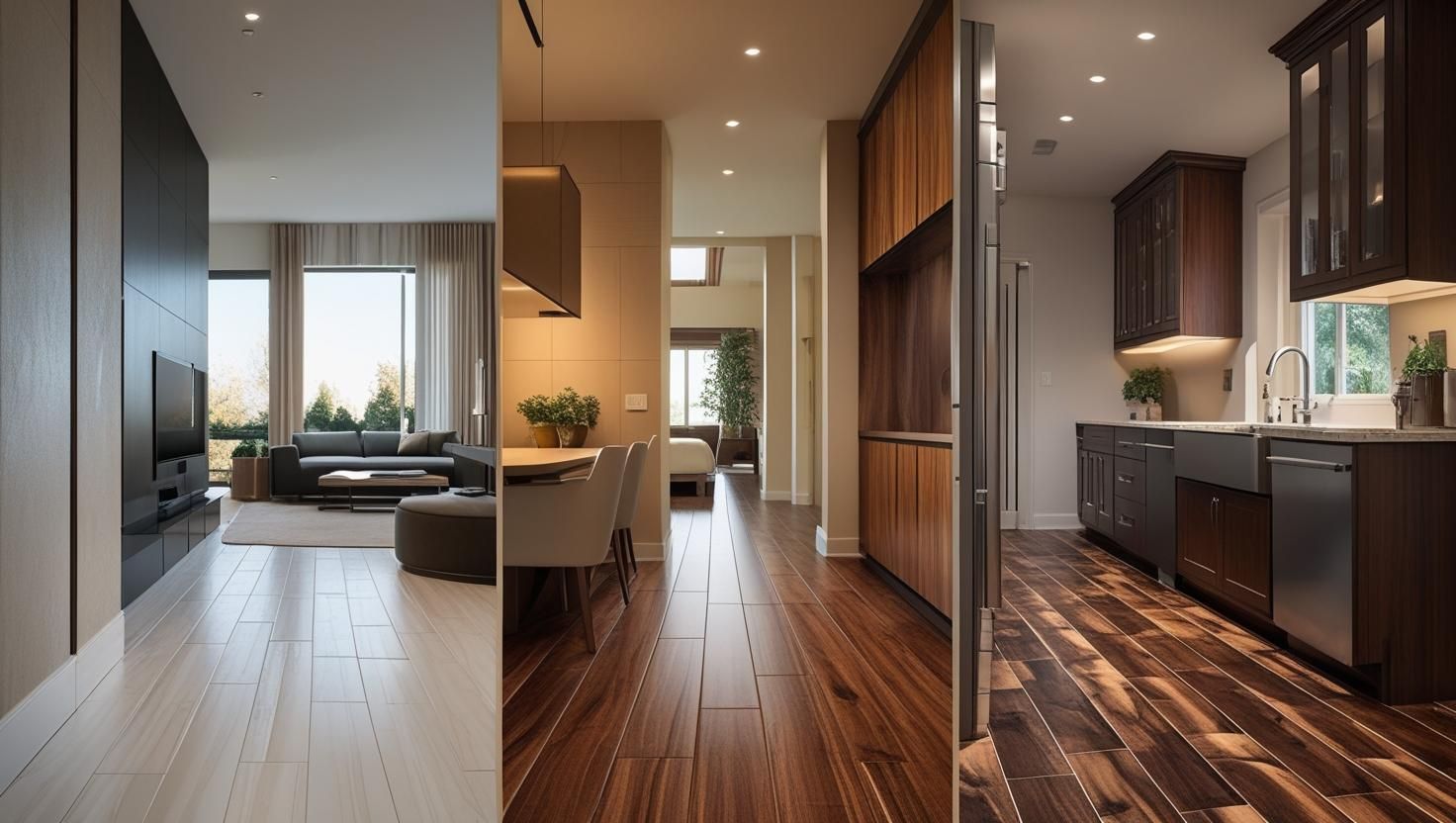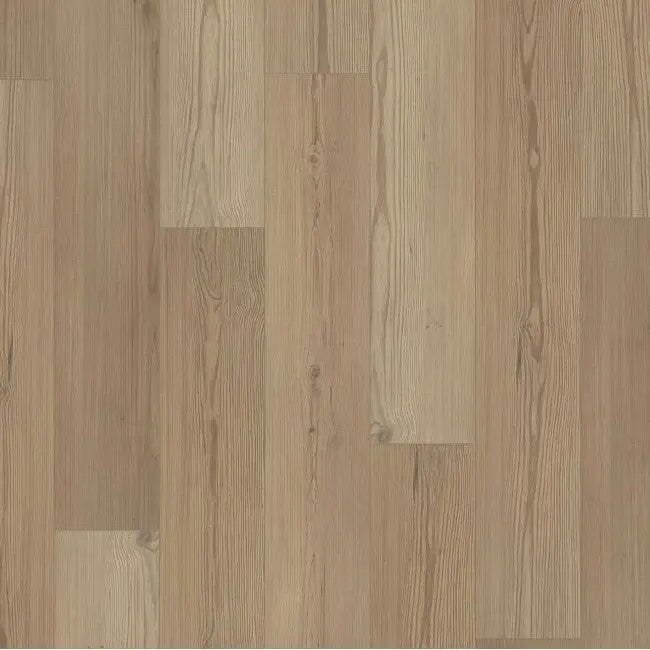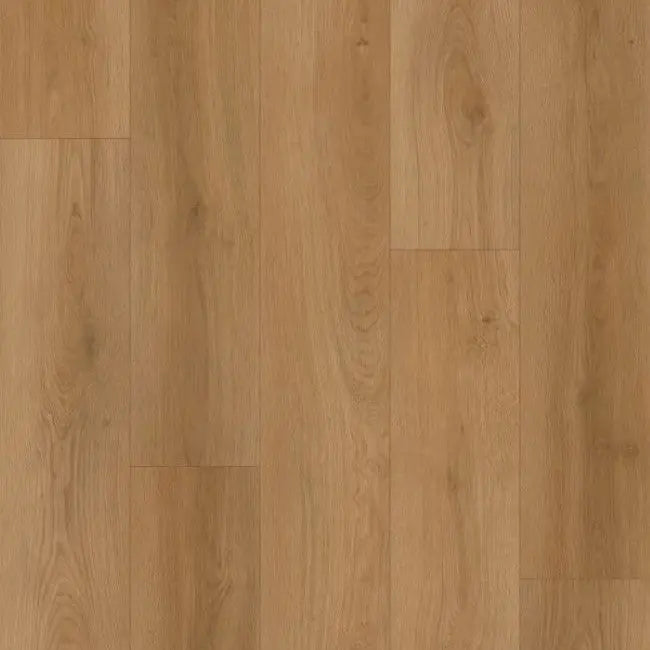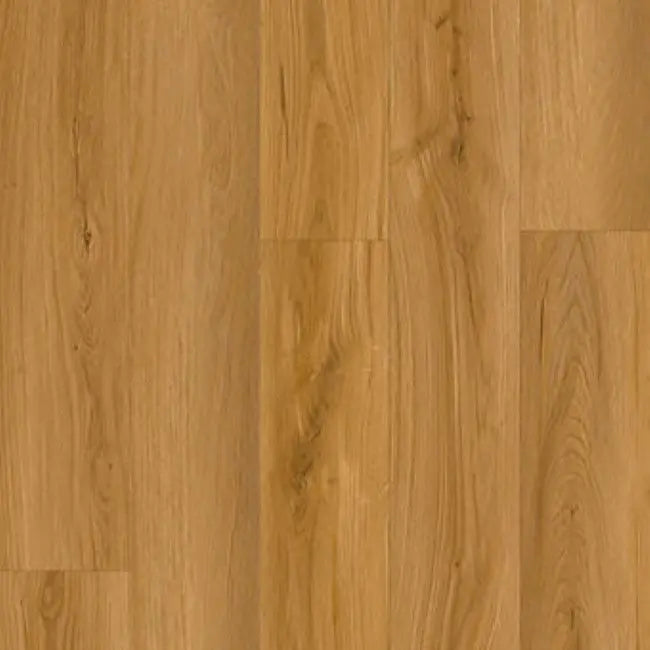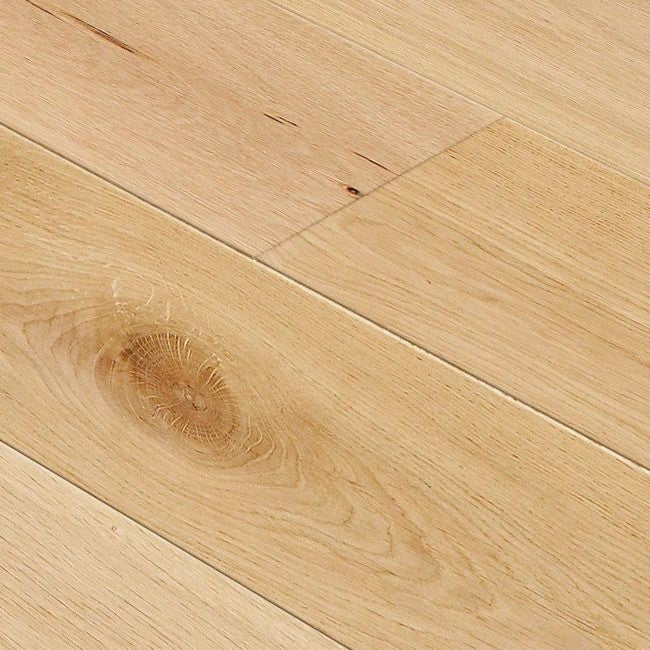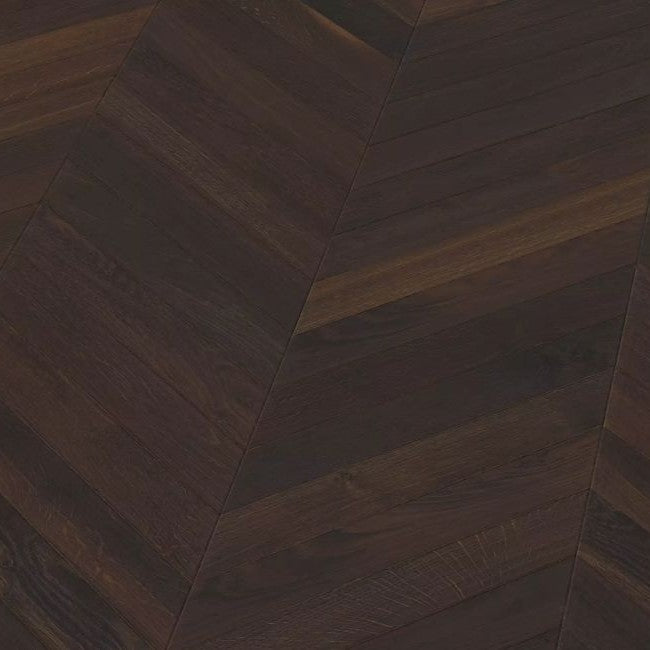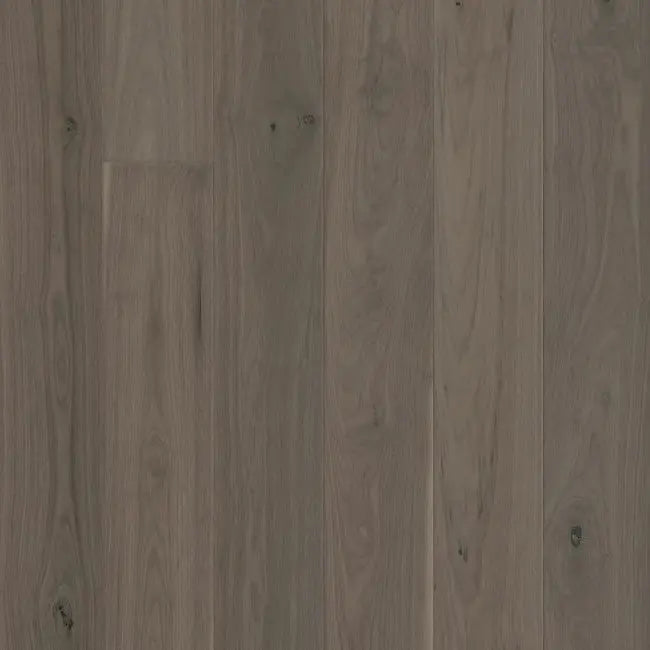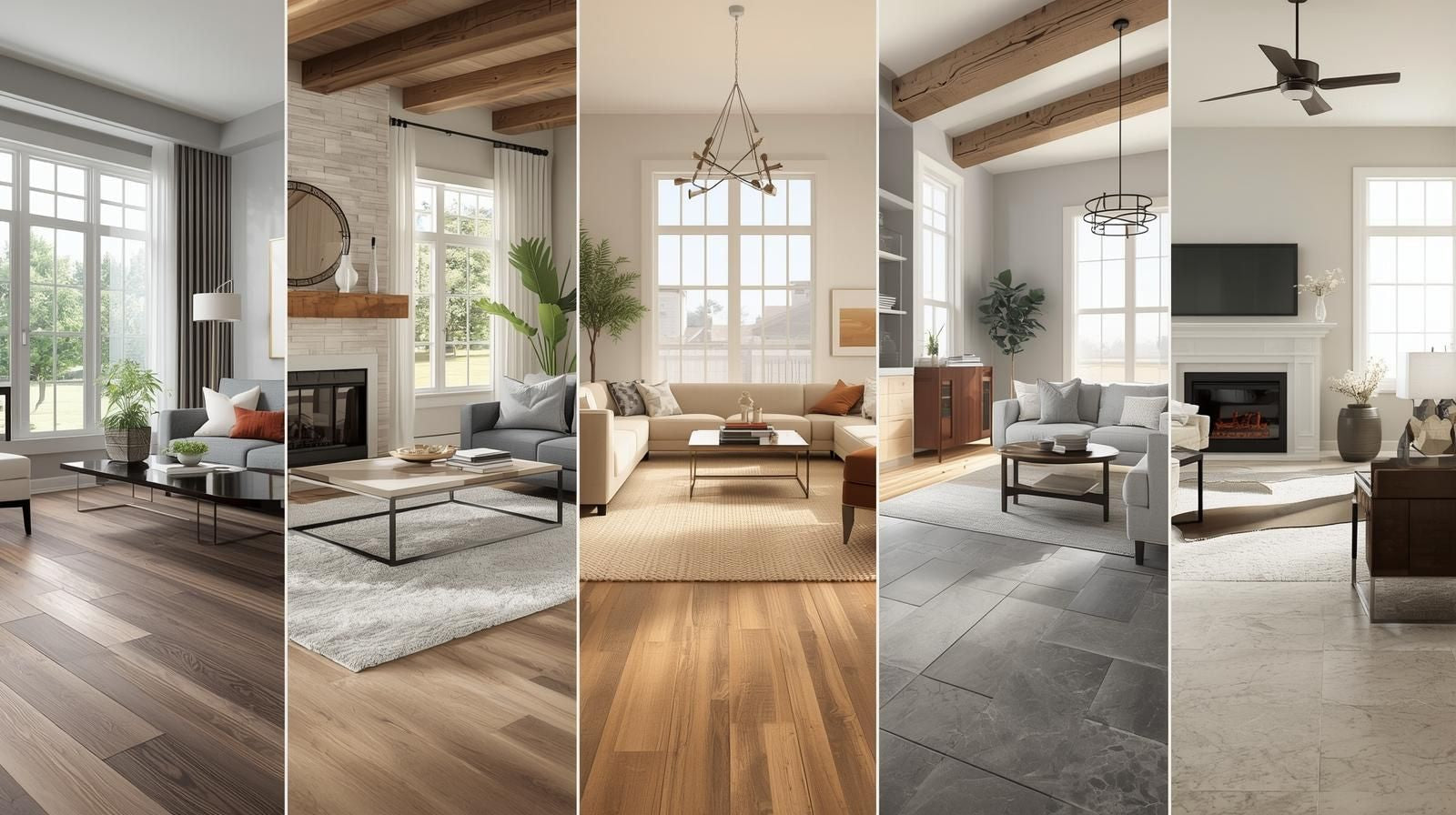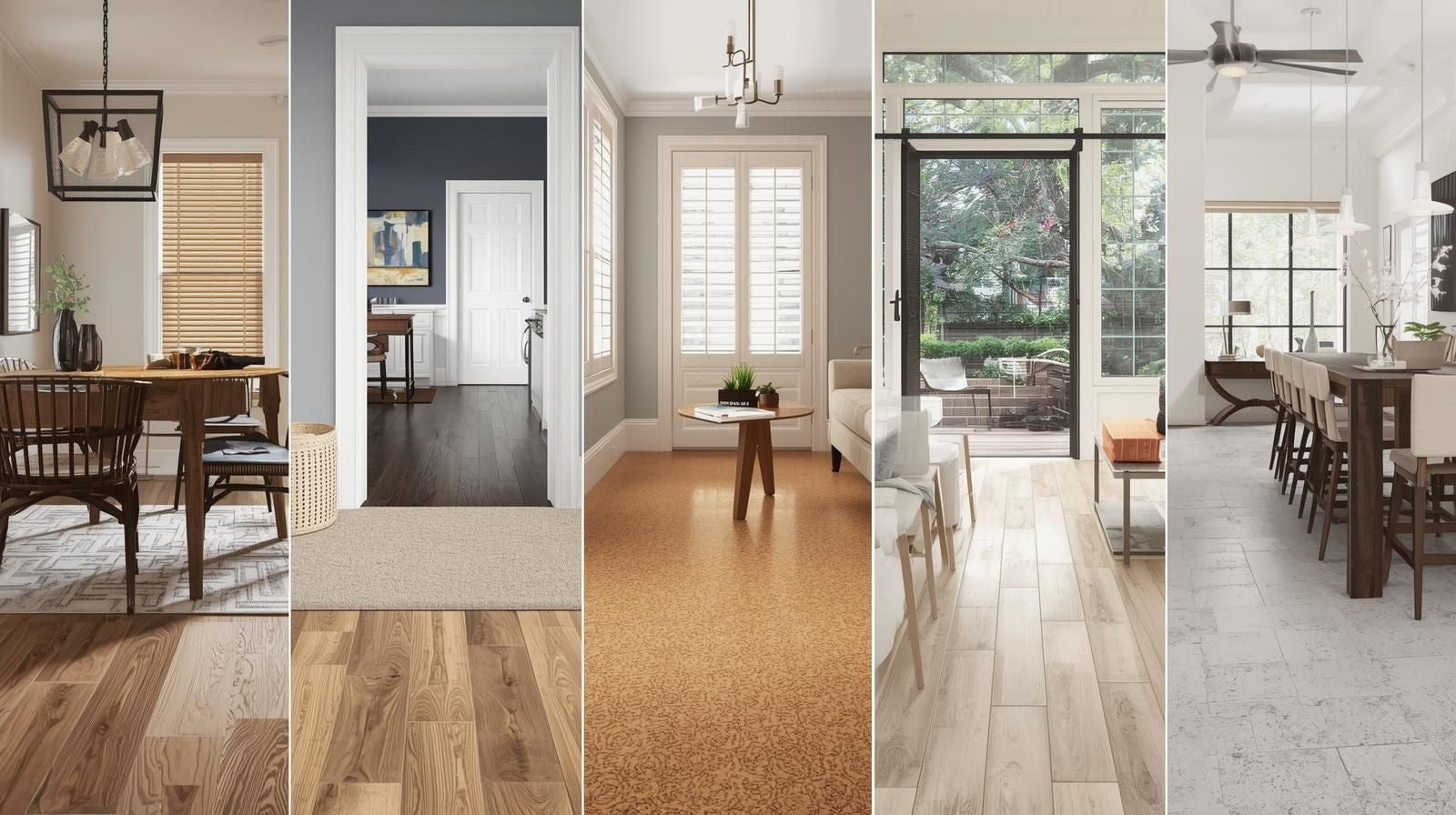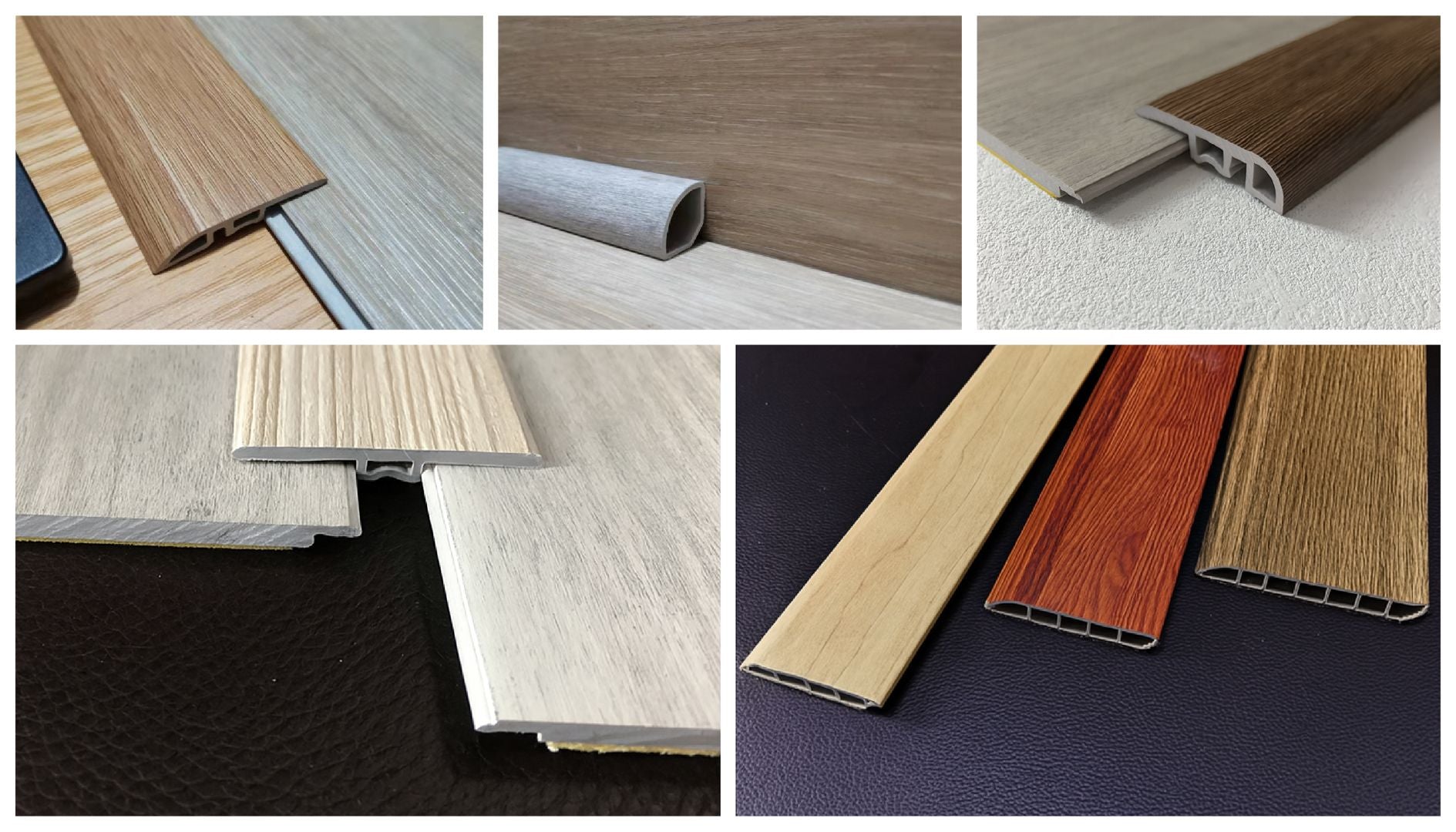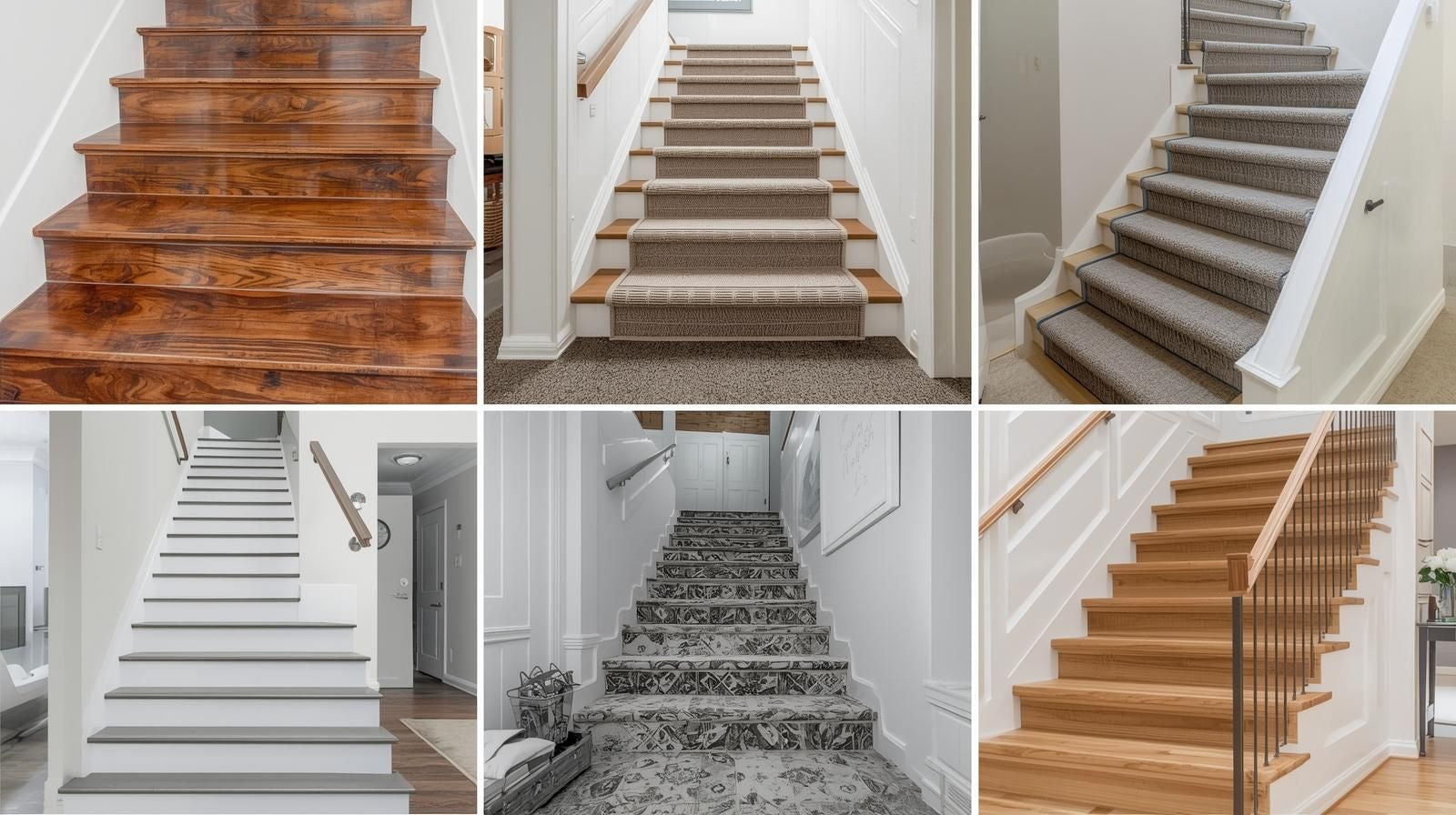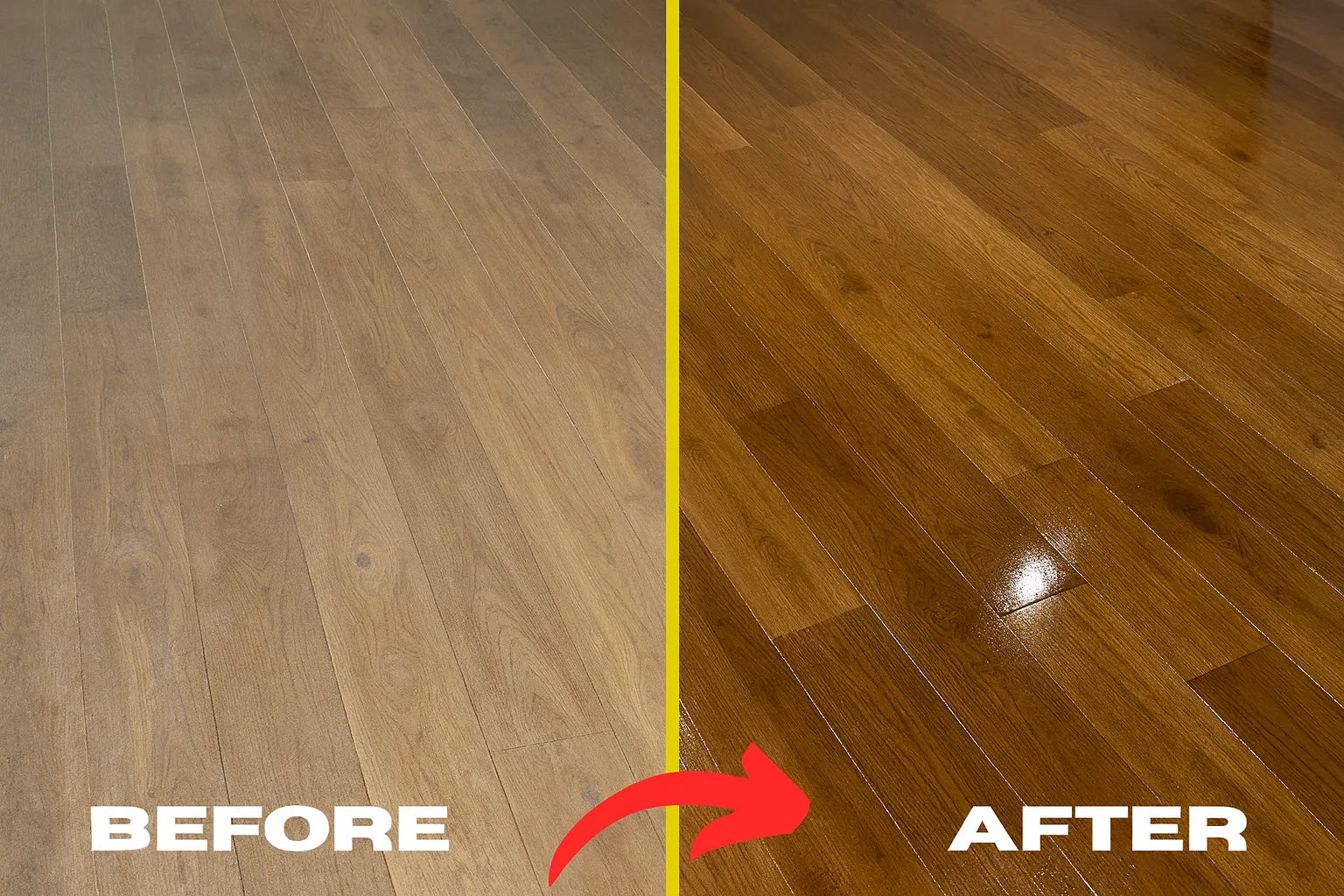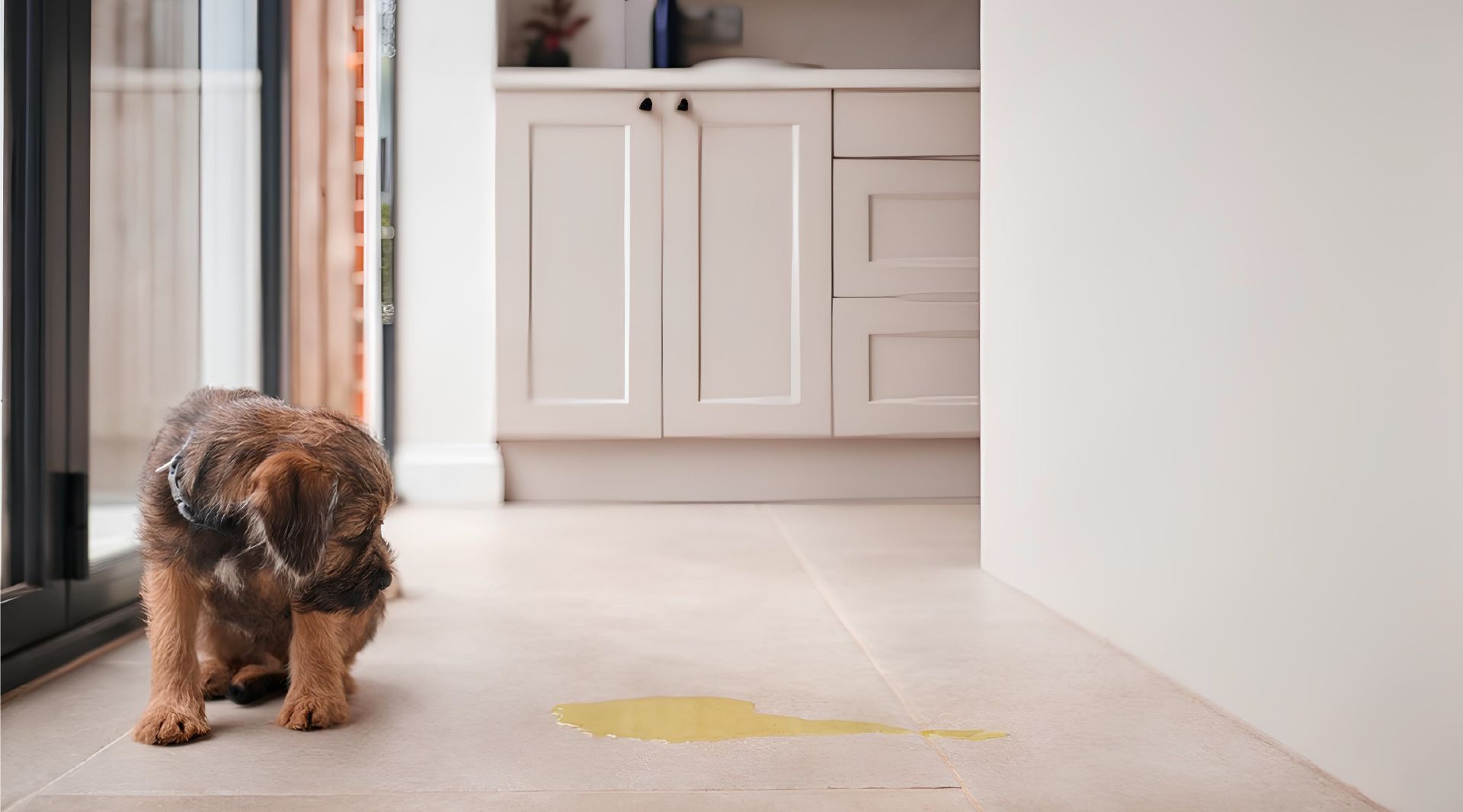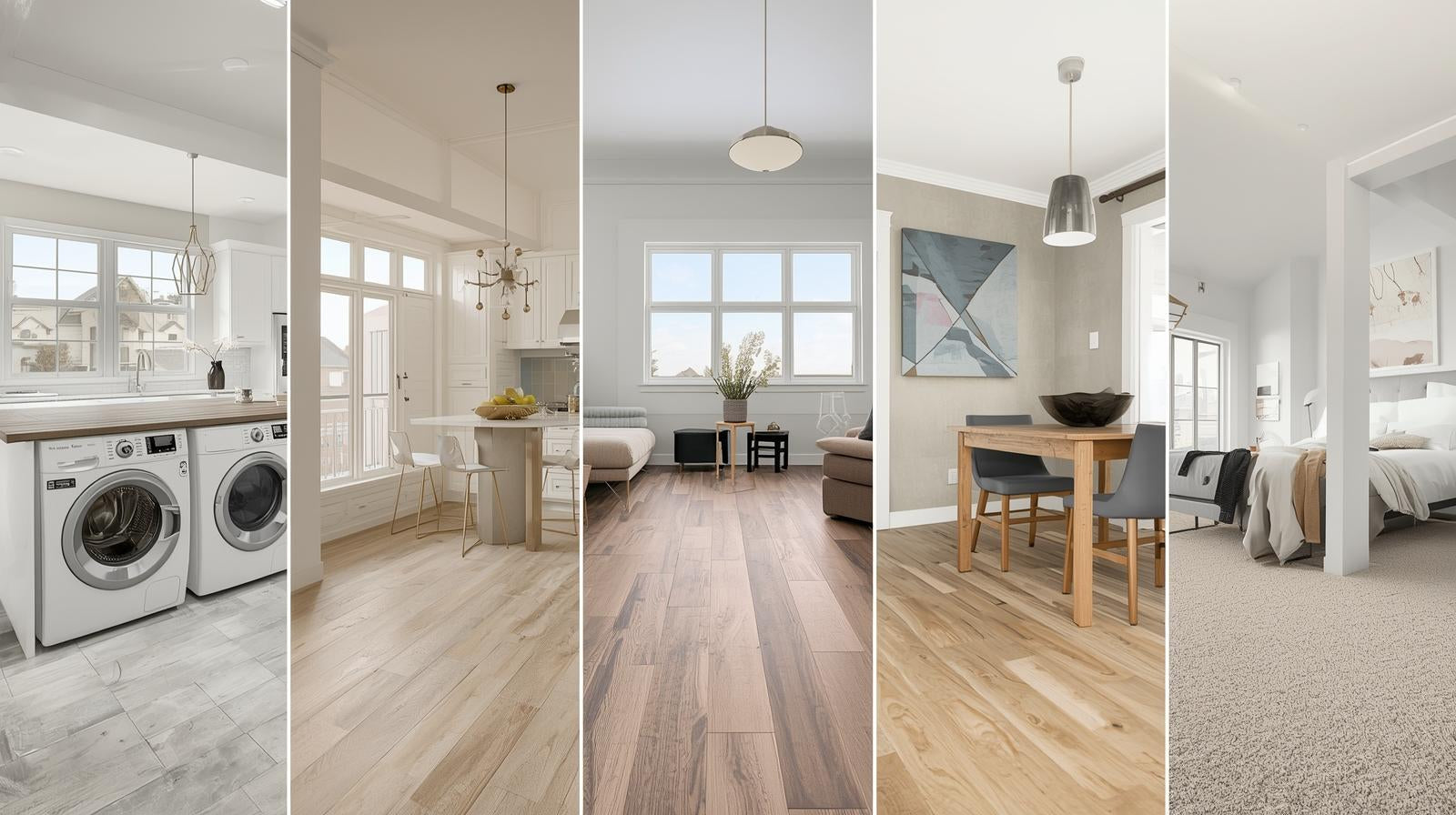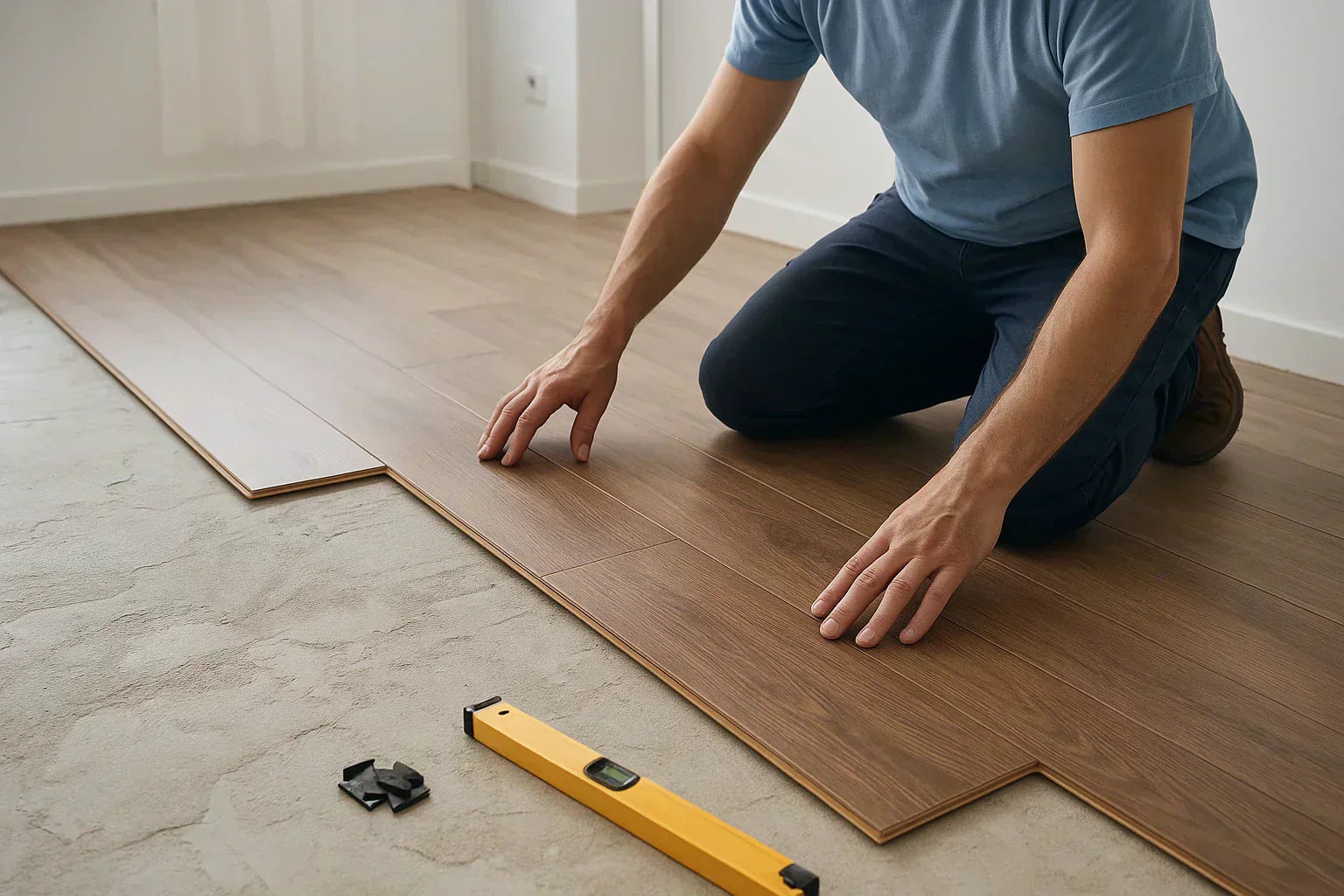Making a decision about the flooring doesn't just depend on looks, but also on performance, durability, cost, as well as its long-term value. There are three flooring options that are particularly popular these days, namely laminate, hardwood, and engineered wood flooring. All of these materials have different chemical compositions, production methods, and ideal uses; it's enough to leave your head a little sticky if you are not familiar with how they differ on a technical level.
At first glance, they all appear similar, even featuring the same wood patterns and color schemes, but these flooring products are quite different from what they seem.
Waterproof laminate flooring is constructed with drainage and cushioning layers, attached to a high-quality digital imaging layer, and topped with a hard, transparent wearing layer, which is then laminated onto the unique core board. Solid hardwood flooring is slabs of hardwood cut individually from a single piece of wood. Engineered wood flooring offers a hybrid approach, combining a thin veneer of real hardwood with layers of plywood or high-density fiberboard (HDF) underneath, giving it improved stability and resistance to moisture.
In this post, we'll compare the basic differences between these three types of flooring, including their appearance, manufacturing process, durability, and what you can expect in terms of installation, maintenance, and long-term performance. So, keep reading!
Comparison of Laminate, Solid, and Engineered Wood Floors
| Feature | Laminate | Solid Hardwood |
Engineered Hardwood |
| Appearance | Looks like wood, but is made from synthetic materials | Authentic natural wood grain | Real wood veneer with layered construction |
| Durability | Highly scratch-resistant, for heavy traffic | Can scratch or dent easily | Less resistant to scratches |
| Moisture Resistance | Good, water-resistant models are available | Poor, prone to swelling and warping | Better moisture resistance than hardwood |
| Noise Insulation | Can be loud underfoot without underlayment | Noisy without rugs or insulation | Quieter due to the layered build |
| Installation | DIY-friendly click-lock system | Nail-down, professional install required | DIY or glue/nail/floating options |
| Resale Value | Low to moderate | High | Moderate to high |
Appearance and Aesthetic Differences

Waterproof laminate flooring features a photographic layer that replicates natural wood grain. This high-resolution layer is bonded to a fiberboard core. Newer embossed-in-register technology makes the surface more realistic by matching the texture to the grain lines. Still, it doesn’t fully capture the depth or natural variation of real wood. A melamine wear layer covers the top. It protects the floor but often gives it a shiny, synthetic gloss.
Check out this detailed guide on waterproof laminate flooring
Solid hardwood comes straight from solid lumber. Each board has its own grain lines, small flaws, and natural tone changes. This gives it a warm, authentic look that feels more alive. It's 3D texture isn’t printed; it’s naturally part of the wood.
Engineered hardwood brings together beauty and durability. On top, it has a real hardwood veneer that’s usually 1 to 6mm thick. Under that, several layers of plywood or high-density fiberboard are stacked to give it strength and stability that hold up well in different conditions.
Verdict: For authentic visuals, go with hardwood or engineered wood. For affordability with decent looks, laminate works well.
Durability and Longevity Comparison
A durable floor handles more than just daily wear. It needs to deal with pressure, traffic, moisture, and even weather-related stress.
Laminate floors are resistant to scratches, especially in high-traffic areas. The top layer, called the melamine wear layer, has aluminum oxide mixed in. That’s what makes it tough against fading and scuffing. Beneath that, there’s a core made of dense fiberboard for floor strength, but it doesn’t hold up as well against changes in temperature or moisture like engineered wood does.
- Rated using the AC scale
- Laminate can chip or dent if a sharp object is dropped.
- Absorbs water quickly through seams.
- The average lifespan is around 10–20 years.
You get dense structure and long-term durability with solid hardwood. There's no composite or layered base, which makes it feel authentic, but that also means it can shift as the air changes. Heat and humidity play a big role; they expand or contract over time. Here are a few things worth thinking about as you choose flooring.
- It doesn't stay stable in wet or steamy rooms.
- Marks from pets or falling objects can show up easily.
- With the right care, though, it can hold strong for decades, sometimes up to a century.
Engineered wood has a top layer made of real wood and a solid inner base built from layers of plywood or HDF. That smart structure holds up much better than traditional hardwood when your home faces shifts in humidity or sudden weather swings.
- Real wood veneer multi-layer
- Core stability
- Less scratch-resistant than laminate
- Expected lifespan typically ranges from 20–40 years
Read in Detail: Difference Between Engineered and Natural Wood Flooring
Which Flooring Has Better Capacity to Handle Moisture, Noise, And Water?
Moisture resistance, sound control, and water tolerance don’t work the same way for every type of floor. You’ll feel the difference most in areas like kitchens, bathrooms, basements, or homes with multiple levels.
The protective wear layer on a waterproof laminate floor resists surface moisture, and the locking system helps hold it in place. But edges and seams can still let water in, which leads to swelling. It cuts down on noise pretty well when used with underlayment. That’s why families on a tighter budget often choose it for medium-moisture areas that see lots of foot traffic.
In humid or slightly wet spaces, engineered wood does a better job. Its base is made of several layers, which help it hold its shape. It doesn’t warp easily and tolerates moisture more than regular hardwood. It also provides noise reduction when installed with padding. You’ll often see it in rooms that need moisture defense but still look warm and finished.
You might want to think twice before installing solid hardwood where moisture is a concern. It can buckle, shift, or swell if exposed to water. This makes it unfit for basements and bathrooms. It also tends to echo without padding. Ideal settings include dry areas with steady air and minimal humidity fluctuations.
Maintenance and Cleaning Needs
Laminate flooring is easy to maintain and a good choice for households. Its protective layer handles dirt well, and stains wipe up with little effort. Just sweep now and then, and mop lightly using a cleaner made for laminates. Too much water is a problem; its fiberboard core swells if it stays moist. You also won’t need to polish or wax it, any refinishing. For families with busy schedules, this kind of simple upkeep makes a big difference. Efficient, low-maintenance, and ideal for busy households, that's the beauty of laminate.
There’s no doubt that solid hardwood floors bring both beauty and durability, but they do demand more effort. Solid hardwood floors don’t handle water well, so they need careful maintenance. A gentle broom works best for daily dust, and a vacuum that’s safe for wood helps too. Once in a while, go for a deeper clean using a pH-neutral cleaner made for hardwood. What’s nice is that these floors can be sanded and brought back to life many times. That boosts their life, though it adds extra work and money over the years.
Engineered wood flooring offers a middle ground. With its hardwood veneer and plywood core, it’s more stable than solid hardwood and can tolerate slight moisture variations. Cleaning engineered hardwood flooring should be similar to hardwood: gentle sweeping, dry mopping, and using a specialized wood floor cleaner. While engineered wood needs refinishing once or twice, that depends on the thickness of the top veneer, usually 1 to 2 times max.
Installation Process

Every floor type has a specific installation process; let's have a look at what makes them different.
Laminate Flooring - DIY-Friendly & Fast Installation
Laminate flooring has DIY installation potential, as it provides a click-lock or tongue-and-groove floating installation system. In this, the planks are locked together over an underlayment with no glue or nails. Laminate doesn't need subfloor attachment, which makes it ideal for apartments or temporary flooring upgrades. Laminate flooring is a cost-effective option for homeowners looking to cut down on labor costs.
Installation typically involves:
- A foam or cork underlayment for cushioning and acoustic performance
- Basic tools: spacers, tapping block, saw
- No drying or curing time; can be walked on immediately
Solid Hardwood - Professional Installation Recommended
Solid hardwood is more labor-intensive to install and generally not suited for DIYers unless you have professional tools and experience. It requires a nail-down or staple-down method, directly affixed to a wooden subfloor. This type of installation must account for wood expansion and contraction.
Installation typically includes:
- Acclimation of boards (5–7 days)
- Use of flooring nailers
- Suitable only for above-grade installations
- Requires sanding and finishing if unfinished
Engineered Wood - Versatile & Stable Installation
Engineered wood flooring has the most versatile installation methods, depending on the product:
- Floating floor (click-lock) for DIYers
- Glue-down for concrete subfloors
- Staple/nail-down for wood subfloors
Due to its dimensional stability, engineered wood comes pre-finished, reducing mess and installation time.
Cost Breakdown & Long-Term Resale Value
Cost is an important factor as it influences both your initial investment and the flooring’s long-term value.
| Flooring Type | Average Cost (Material + Installation) |
Long-Term Resale Value |
| Laminate | $2–$6 per sq. ft. (DIY-friendly) | Low to Moderate – Less appealing to homebuyers |
| Solid Hardwood | $8–$15+ per sq. ft. (Professional install) | High – Premium value, boosts property resale |
| Engineered Wood | $6–$12 per sq. ft. (Varied install methods) | Moderate to High – Good ROI with quality brands |
Final Verdict: Which Flooring is Right For You?
There is no such thing as the “best” selection in the case of flooring; you need to choose the type that best fits your space, your lifestyle, and your budget.
Laminate is a smart, durable choice for busy families and high-traffic areas. Solid hardwood offers warmth, personality, and value for decades, though it doesn’t hold up as well to the elements as engineered wood. Engineered wood finds its own sweet spot between the two: It has a top layer of solid wood, which is generally thin, but beneath that are multiple layers of more plywood/engineered wood. This flooring is of a more uniform quality and cheaper than solid wood, and its thicker layer of top wood veneer makes it a smarter investment than laminate.
Leaning toward engineered wood? This roundup of top engineered hardwood brands can help you narrow the field.
You just need to pick a floor that’s right for the way you live.
Still not sure? Just give us a call at (833) 378-4559 and talk to our professionals, they will guide you and identify what really matches your home.


